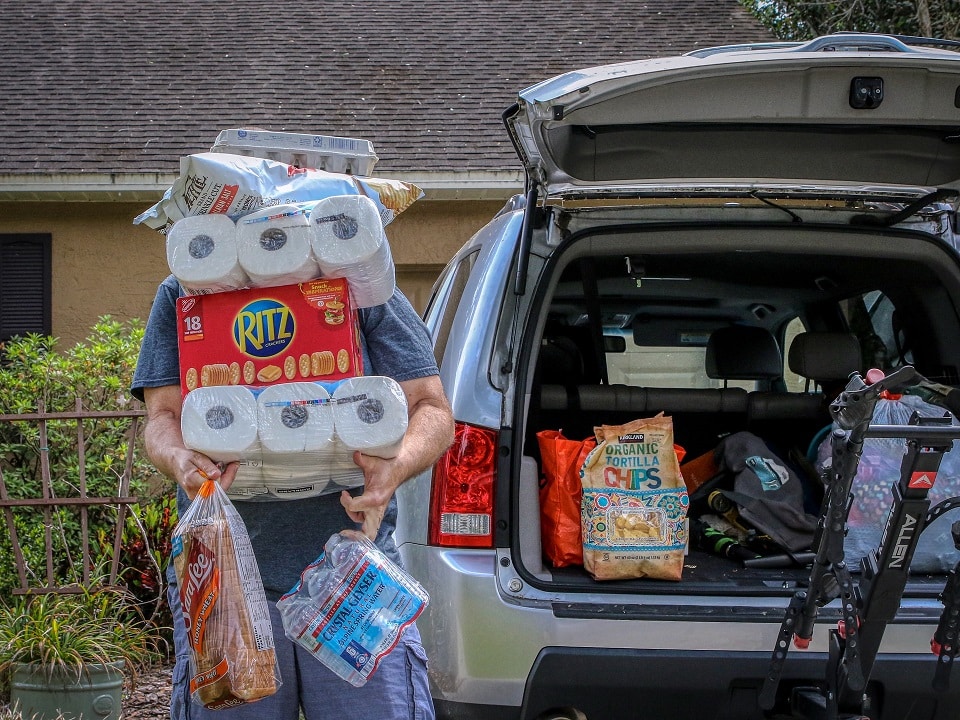Now that all your holiday gift shopping is done, it’s time to tighten that belt and save some money in the new year. Just not at the grocery store.
A combination of various factors including inflation, fewer promotions and a greater need for groceries among those spending more time at home, means that many of us will have to budget more money to keep our fridges and pantries stocked in the new year.
A new KPMG consumer pulse survey focusing on grocery spending has found that shoppers expect to shell out more at the grocery store in 2022 than they did this past year. Survey respondents said they spent an average of $532 per month on groceries this year, and expect to spend $611 per month next year, a 14% increase.
And that’s just the average. 14% of respondents said they expect to spend more than $900 a month on groceries. Yikes.
KPMG attributes the rise to “so many consumers able to work from home, and with their anticipation of rising prices factoring into their budgets.” With many offices delaying their planned return-to-work dates, many more people will be working from home well into the new year. That means continuing to eat all three meals a day at home, and planning their grocery shopping accordingly.
There’s also the matter of higher prices. According to the latest U.S. government figures, grocery prices rose 6.4% over the past 12 months, the largest annual increase since the 12 months ending December 2008 – in the middle of the Great Recession.
KPMG found that the average total spending per grocery transaction was relatively flat over the past year, though still higher than before the pandemic. But the total number of grocery transactions per shopper has been rising over the past year. So more visits, plus the same amount of money spent per visit, equals more spending overall.
When compared to other categories, shoppers expected their grocery bills to rise at a higher rate than their spending on everything from personal care products, to apparel, to medicine.
So shoppers are trying to save money, where they can. “Consumers… expect more value for money in a variety of ways, most notably through loyalty programs,” the KPMG report reads. More than half of all survey respondents said they find a grocery retailer’s loyalty program to be somewhat or extremely important, and one of the main reasons they shop there. 19% prefer stores with everyday low prices, while only 7% opt for convenience, no matter the price. About half of consumers buy their groceries from one primary store. 36% have a backup favorite, while only 5% say they shop around and have no particular preference.
Of course, prices only matter if you can find what you’re looking for. 71% of shoppers say they are very or somewhat concerned about grocery shortages or stockouts. 35% have responded to out-of-stocks by switching brands when their favorite items aren’t available, and 16% have quit shopping at their favorite store altogether and switched to a store that was more reliably stocked with what they wanted.
The good news about all of this increased grocery shopping and spending is that eating at home more often has made many of us expand our culinary horizons. Compared to pre-pandemic times, survey respondents said they now have an average of 13 go-to meals that they prepare at home, up from eight previously.
So a higher price on one favorite item may have encouraged us to try out a less-expensive alternative. An empty shelf where one regularly-purchased product once was, may have introduced us to an unfamiliar substitute that became a new favorite. As a result, we now have a greater variety of options for our everyday meal planning.
How’s that for looking on the bright side? With the state of the economy and the pandemic still uncertain as we wrap up 2021, some grocery shoppers are happy to look for good news wherever it can be found.
Image source: Mick Haupt on Unsplash
















